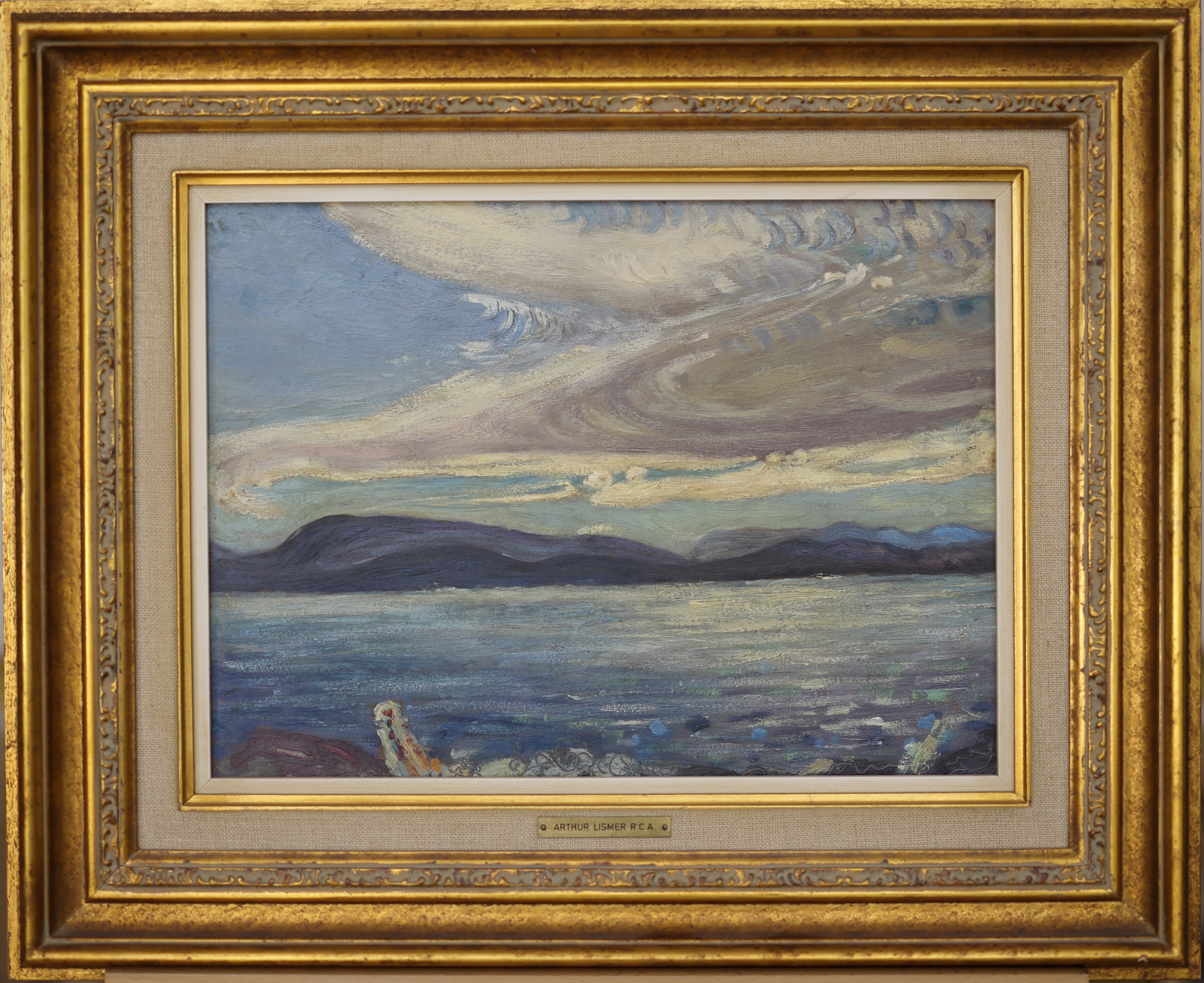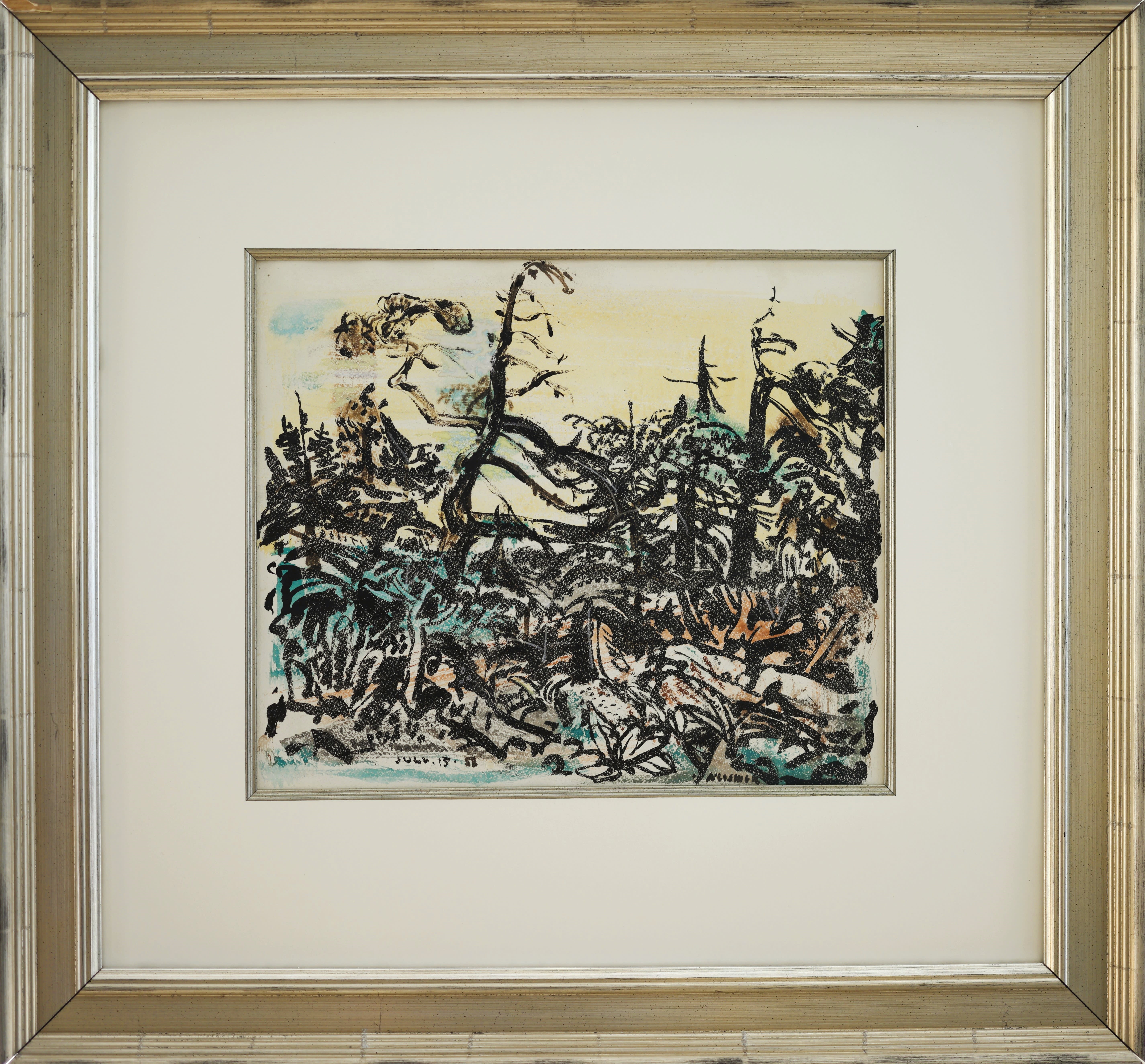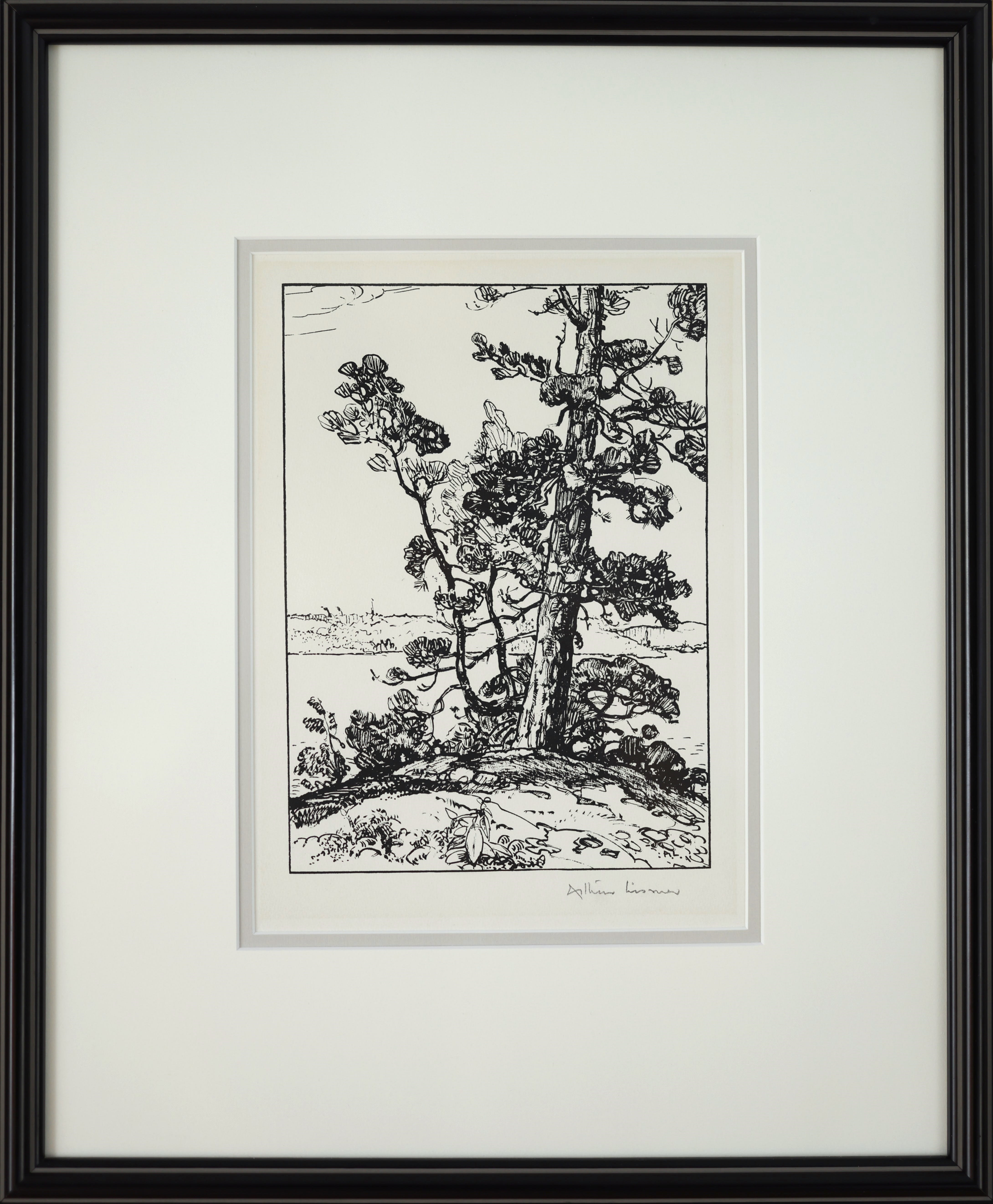"An understanding of psychology, a touch for the maternal, and a capacity for looking at the world through the eyes of a child - these are the marks of good guides and teachers."
(Arthur Lismer, 1948)
Arthur Lismer (27 June 1885 – 23 March 1969), was an influential English-Canadian painter, celebrated member of the Group of Seven, and a visionary educator. Born in Sheffield, Yorkshire, England, Lismer's artistic journey began at the Sheffield School of Art (1898-1905) on a scholarship while apprenticing at a photoengraving firm. He continued his studies at the Académie Royale des Beaux-Arts in Antwerp, Belgium, where he delved into art's diverse forms and techniques.
 Arthur Lismer; Northern Lake
Arthur Lismer; Northern Lake
Immigrating to Canada in 1911, Lismer settled in Toronto and joined the commercial art firm Grip Limited, where he encountered fellow artists like J.E.H. MacDonald and Franklin Carmichael. Embracing the Canadian landscape's rugged beauty, characterized by rocks, pines, and expansive stretches of tumultuous water and sky, Lismer's fascination with nature flourished.
In addition to his professional endeavors, Lismer dedicated himself to art education, serving as the President of the Victoria School of Art and Design in Halifax (1916-1919) and later as vice-principal of the Ontario College of Art in Toronto. His visionary teaching philosophy extended beyond borders, impacting communities in South Africa, New York, and Montreal.
 Arthur Lismer; Ragged Skyline
Arthur Lismer; Ragged Skyline
Lismer's artistic repertoire was multifaceted, ranging from capturing the devastation of the 1917 Halifax Explosion to portraying World War I's dazzle camouflage ships. His tenure as a charter member of the Group of Seven (since 1920) solidified his commitment to forging a distinct Canadian art style that echoed the nation's spirit through its landscape.
Over the years, Lismer's art evolved, transitioning from early Impressionist influences to a more angular and expressive style, mirroring the ruggedness of the Canadian terrain. His profound commitment to art education led him to supervise education at the Art Gallery of Toronto (now the Art Gallery of Ontario) and teach at the Art Association of Montreal (now the Montreal Museum of Fine Arts) until 1967.
 Arthur Lismer; Pine
Arthur Lismer; Pine
Arthur Lismer's contributions were recognized nationally and internationally, evident in retrospective exhibitions and honors such as his appointment as a Companion of the Order of Canada in 1967. His legacy endures through his influence on child art education, shaping Canadian art's identity, and his lasting impact on generations of artists. Lismer passed away in Montreal, Quebec, and was laid to rest at the McMichael Canadian Art Collection Grounds, alongside his fellow Group of Seven members. His memory lives on in Lismer Hall at Humberside Collegiate Institute and through his designation as an Historic Person in the Directory of Federal Heritage Designations.


